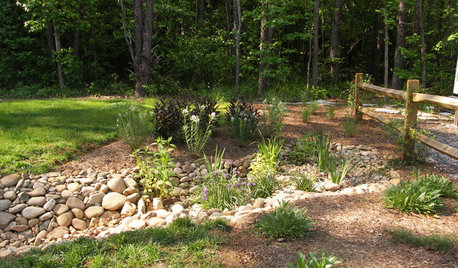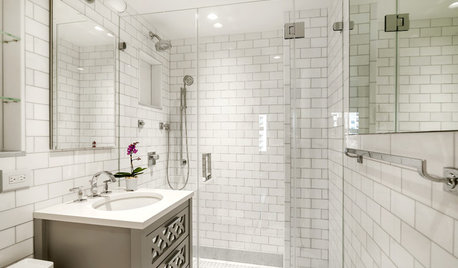5-1-1 watering frequency
njitgrad
9 years ago
Related Stories

LIFEThe Top 5 Ways to Save Water at Home
Get on the fast track to preserving a valuable resource and saving money too with these smart, effective strategies
Full Story
EVENTSTreasure Hunting at the Brimfield Antiques Fair
More than 5,000 antiques dealers are selling their goods along a 1-mile stretch of rural New England this week. Here's what we found
Full Story
COTTAGE STYLEHouzz Tour: Lowcountry Charm for a South Carolina Cottage
Smart design and beautiful views help a family of 5 live comfortably in 1,200 square feet
Full Story
SAVING WATER11 Ways to Save Water at Home
Whether you live in a drought-stricken area or just want to help preserve a precious resource, here are things you can do to use less water
Full Story
LANDSCAPE DESIGN5 Steps to Selecting the Right Plants for a Rain Garden
A simplified look at selecting plants for a rain garden
Full Story
SAVING WATERXeriscape Gardens: How to Get a Beautiful Landscape With Less Water
Conserve water and make gardening much easier with the xeriscape approach’s 7 principles
Full Story
GARDENING GUIDESHow to Keep Your Trees Healthy
Ensure your trees’ vigor for years to come with these tips for protecting roots, watering effectively and more
Full Story
BATHROOM WORKBOOK5 Ways With a 5-by-8-Foot Bathroom
Look to these bathroom makeovers to learn about budgets, special features, splurges, bargains and more
Full Story
PETS5 Finishes Pets and Kids Can’t Destroy — and 5 to Avoid
Save your sanity and your decorating budget by choosing materials and surfaces that can stand up to abuse
Full Story
DECORATING GUIDES5 Decor Trends to Try — and 5 to Rethink
Some style trends are worth jumping onboard. Others you may want to let fade from your memory
Full StorySponsored
Your Custom Bath Designers & Remodelers in Columbus I 10X Best Houzz
More Discussions



the_yard_guy
njitgradOriginal Author
Related Professionals
Windham Landscape Architects & Landscape Designers · Anderson Landscape Contractors · Bethel Park Landscape Contractors · Bridgeview Landscape Contractors · La Mirada Landscape Contractors · Plainview Landscape Contractors · Weslaco Landscape Contractors · Bensenville Landscape Contractors · Cheshire Solar Energy Systems · Norwalk Window Contractors · Washington Window Contractors · Madison Fence Contractors · Phoenix Fence Contractors · Claremont Fence Contractors · Oxnard Fence Contractorswoodlandpatio
DMForcier
the_yard_guy
njitgradOriginal Author
Rickster88
njitgradOriginal Author
drew51 SE MI Z5b/6a
the_yard_guy
Ohiofem 6a/5b Southwest Ohio
greenman28 NorCal 7b/8a
hairmetal4ever
Ohiofem 6a/5b Southwest Ohio
the_yard_guy